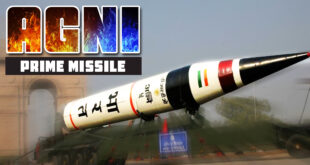- March 23 is a milestone in the history of India’s Independence struggle. It was on this day, in 1919, that Mahatma Gandhi was in Chennai on the invitation of Kasturi Ranga Iyengar. Gandhiji had hitherto been struggling to find a way to counter the draconian and recently enacted Rowlatt Act by the British.
- It was in the early hours that day that he dreamt of the idea of a mass hartal to counter the Act. The Satyagraha of April 6, 1919 was an act of defiance that brought the nation to a standstill and shook the foundations of the Raj.
- Many may still be unaware of this pivotal moment and its importance in our history despite Gandhiji describing it in his autobiography, in the chapter, ‘That wonderful spectacle’.
Thread of selfless zeal
- Many such moments of indomitable courage, insurrection and sacrifice which have left their imprint on the freedom struggle have never got their due. The 1857 rebellion is called the First War of Independence.
- But the many spirited revolts against the British Empire in South India prior to this, such as the Attingal revolt, the Poligar rebellion and the Vellore Mutiny are scarcely mentioned.
- The central government’s ‘Azadi Ka Amrit Mahotsav’ initiative, to celebrate and commemorate 75 years of freedom, has endeavoured to honour such unsung mileposts and icons.
- With its thread of selfless nationalistic zeal, India’s independence movement was a crucible that coalesced people from contradictory and even conflicting backgrounds and ideologies.
- In the early 20th century, it pitted the moderates, who trusted constitutional methods, against the extremists, who preferred boycott and revolution. Thus the Lal-Pal-Bal triumvirate and Aurobindo underwent rigorous imprisonment, while the valorous Bhagat Singh, Birsa Munda and Vanchinathan sacrificed their lives.
- There were also the icons, Gopal Krishna Gokhale and B.R Ambedkar, who served in the British Viceroy’s executive council and were probably never imprisoned. But this in no measure dilutes or even diminishes their patriotism and contributions to India’s freedom.
- The intrepid Subhas Chandra Bose valiantly raised an army overseas to free India, a venture where he worked with Japan, an Axis power.
- The patriots Bhikaiji Cama, Shyamji Krishna Varma, Chempakaraman Pillai and Thillaiyadi Valliammai championed the cause of India’s liberty from abroad, but can their methods, motives or love for India be questioned?
The situation today
- It is a matter of regret that in the recent political discourse in India, leaders and organisations are being slotted, stigmatised and even slandered for their role or the lack of it in the freedom movement.
- D. Savarkar is one such figure. Yet, in a letter dated May 30, 1980, Prime Minister Indira Gandhi wrote to to Pandit Bakhle, then Secretary of the Swatantrya Veer Savarkar Rashtriya Smarak: “Veer Savarkar’s daring defiance of the British Government has its own importance in the annals of our freedom movement. I wish success to the plans to celebrate the birth centenary of this remarkable son of India.” There needs to be an understanding of the era before indulging in coarse criticism.
- Jawaharlal Nehru’s tryst with Nabha jail, in September 1923 — he was arrested along with K. Santhanam and Acharya Gidwani — is a lesser known episode. Nehru was released on signing a bond that he would never enter the princely State of Punjab. When Gidwani was arrested again later, Nehru wrote in his An Autobiography
- Gandhiji himself supported the British in the bitter Boer war, or the South African war. He was later awarded the Kaisar-i-Hind medal, in 1915, by the British for his humanitarian work in South Africa, which he later returned in 1920.
- The moderates in the Congress supported the 1919 Montagu–Chelmsford Reforms in the immediate aftermath of the Jallianwala Bagh massacre. In 1942, C. Rajagopalachari stayed away from the Quit India Movement as he felt it would not serve India’s best interests.
View history holistically
- Could all these examples above be deemed to be perfidious? History should be looked at holistically instead of becoming an exercise where there is selective denunciation and nit-picking.
- The Congress party did play a pre-eminent role in India’s freedom movement, but this struggle that spanned over two centuries is not the fiefdom or sole preserve of any one person or establishment.
- ”Janani Janmabhumishcha Swargadapi Gariyasi” is a hemistich of a Sanskrit shloka from the Ramayana which broadly means ‘Mother and motherland are superior even to heaven”.
- Our gallant freedom fighters did not plunge into their battle against the British for pelf, position or power, and they certainly did not know whether they would live to see the next day. They were fallible humans who assessed circumstances and arrived at decisions with the sole aim of liberating their motherland.
- It is easy to sit on the high chair of hindsight and make sweeping judgements about history. To impugn individual patriotism while viewing it through the coloured spectacles of concocted binaries is not only regressive but also wrong.
- In the 76th year of India’s Independence, every Indian is beholden to express unreserved gratitude to all, especially the unsung luminaries of our freedom struggle who were devoted to the national cause. This should transcend any ideological inclination or political proclivity that they professed or practised in their later lives.
SOURCE: THE HINDU, THE ECONOMIC TIMES, PIB
 Chinmaya IAS Academy – Current Affairs Chinmaya IAS Academy – Current Affairs
Chinmaya IAS Academy – Current Affairs Chinmaya IAS Academy – Current Affairs

